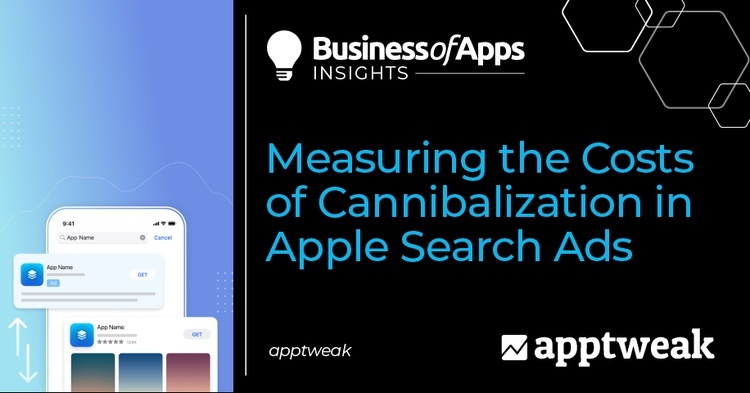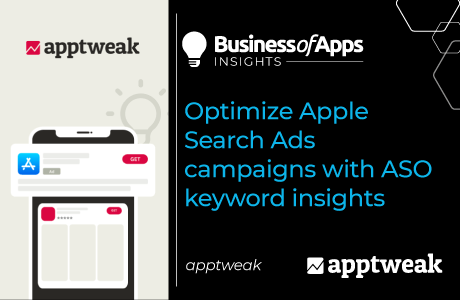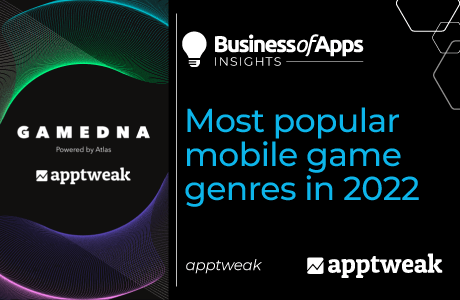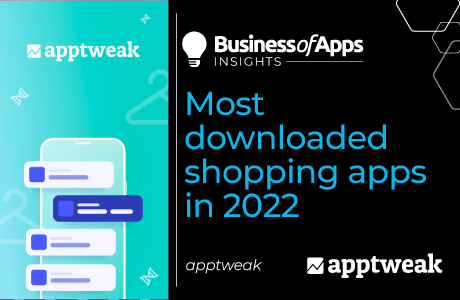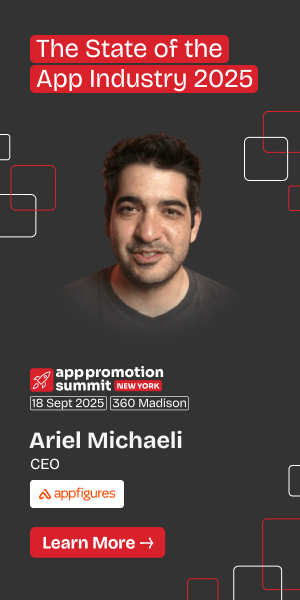The content of this article was first presented by Simon Thillay, Head of App Store Optimization (ASO) at AppTweak, during the ASO Conference 2021 on June 3rd.
This spring, the App Tracking Transparency (ATT) framework was released as part of Apple’s efforts to advance user privacy on the App Store. ATT now requires app developers to obtain explicit permission (opt-in) from users to track their data or share their information with advertisers. As a result, effectively targeting the right audiences with mobile ads on the App Store has become more complicated. Instead, many app developers are considering shifting more advertising budgets to Apple’s native ad platform, Apple Search Ads (ASA), due to its exemption from the ATT limitations. In this blog, we provide a model that will help you measure the cost of cannibalization in your Search Ads campaigns and understand the pros and cons of Apple Search Ads.
Apple Search Ads in 2021
On paper, the principles behind Apple Search Ads are quite simple: app developers can bid on any keyword to have their app appear above the first organic search result for that keyword, in hopes that this prominent position in the search results will help to increase app downloads. The App Store algorithm supposedly determines which app wins a bid for a keyword by considering the metadata (title, subtitle, screenshots, etc) and performance of each bidding app.
However, the possibility for any app to bid on any keyword – including brand names – has led many apps to bid on their competitors’ branded terms. In turn, this has pushed apps to bid on their own branded terms to prevent competitors from ‘stealing’ their traffic. The following question therefore arises: in defending your installs and impressions from being ‘stolen’ by your competitors, how many of these installs and impressions would your app have gained organically? This is traffic that has fallen victim to ‘cannibalization’: when you pay for traffic or app installs that would have otherwise been driven organically.
Modeling the cost of cannibalization vs brand protection
To model the price of cannibalization, you should first understand how we define Cannibalized Installs. Cannibalized Installs are the total number of installs you received from your Search Ads campaigns minus the number of Protected Installs.
Cannibalized Installs = Total Installs – Protected Installs
Protected Installs are the number of Installs that you received, but that your competitor could have been able to convert into downloads.
Protected Installs = Impressions * Estimated Competitor Conversion Rate
The Cost of your Protected Installs then becomes:
Cost Per Protected Install = Total Ad Spend / (Impressions * Estimated Competitor Conversion
Rate)
Comparing your Cost Per Protected Install with the Cost Per Install reported by Apple Search Ads can then help you estimate the ‘protection premium’ you pay for a given campaign; this will also help you determine what amount of your Search Ads spend actually goes toward cannibalization. Unfortunately, identifying these costs does not remove the dilemma of whether you should bid on your top organic keywords or not, but it can at least help inform your decisions to start, stop, or change the budget you invest in specific Search Ads campaigns.
Use AppTweak’xs “Search Ads Cannibalization Model” template to start estimating your own cannibalization costs.
Accurately estimating competitors’ conversion rate
To determine your Cost Per Protected Install using the above equation, you must understand whether the competitor who ‘steals’ your paid impression would be able to convert it into an app download, thus estimating your competitor’s conversion rate.
You must first formulate conversion rate hypotheses. This is the ‘hit or miss’ part of the entire cannibalization model: given that conversion rates are closely guarded data (Apple does not even share with developers organic conversion rate data at a keyword level), it is a difficult challenge to formulate accurate hypotheses about conversion rates. As such, the best route is probably to use proxy variables – substitute variables that help us approximate conversion rate – to ensure your estimates are not completely unrealistic.
The main data points to use in such a case are typically the keyword-level conversion rates that you can obtain from your own Search Ads campaigns. It is only logical to imagine that your app’s conversion rate for your own brand name is unlikely to be lower than the conversion rate of your competitors that are also bidding on your brand name. Therefore, you can use this figure as an ‘upper bracket’ that competitors will have difficulty reaching. Then, you can invert this logic by considering your own app’s conversion rate for a competitor’s brand name; this is a great way to anchor your hypothesis and better understand how your competitor might convert users that search for your brand name.
Once you have determined your first anchors, you should calculate a similarity score between you and your competitor(s), and refine your conversion differential hypotheses based on your user research and data points presented by third-party tools. In particular, remember that the app stores are strongly grounded on relevance – the multiple places in which your app appears on the stores represent just as many opportunities to compare your similarities and conversion performances with other apps. For instance, the top organic search rankings tend to reflect which of the most downloaded apps convert better than others for specific keywords or queries; these search rankings are therefore great hints to help you estimate the varying conversion rates of your competitors.
Considerations when estimating conversion rates
There are a number of different factors you must consider when estimating your competitors’ conversion rates:
- It is firstly important to consider an app’s brand power and consumer loyalty: when searching for a certain query (branded or generic) on the store, different consumer segments have different ‘first choice’ apps in mind. Assembling a user research team can help you better understand brand notoriety on the App Store and give you an initial idea of your app’s brand power; however, don’t forget to employ both quantitative and qualitative research methods to measure how users react to your brand. Brands that customers identify strongly with (for instance, because of a sense of shared values) are a lot less likely to have customers switch to a competitor’s product when given the opportunity.
- Next, you should consider your competitors’ notoriety: competitors that most customers have never heard of tend to represent a smaller threat to your brand traffic. However, even if your customers are unfamiliar with a competing product, you must also consider the perceived similarity of this product to your own. Your products may actually be very different; nonetheless, these perceived similarities represent the greatest risk of store users adopting opportunistic behaviors and reconsidering which app to download.
- Third, it is important to consider consumers’ true search intent. For instance, consumers searching for “[brand name] free” may simply be searching for an app that offers functionalities similar to the branded app but for a cheaper price. On the other end of the spectrum, certain brands with extremely high notoriety and a strong presence may instead represent an entire genre of apps. For example, the brand names “scrabble” and “mario kart” were frequently searched for on the App Store even before their official apps were released; this demonstrates that users do not always search for brand names with the intent of downloading that app, but often with the general goal of finding a similar product.
Use the cannibalization model efficiently and cautiously
Measuring the exact cost of cannibalization has been central to Apple Search Ads since they were introduced on the App Store. However, it is important to remember that models, such as the one presented in this article, are designed to simplify reality in order to facilitate decision-making. When using this model, don’t forget the following considerations:
- This model does not account for certain parameters, such as the percentage of users who automatically ignore apps in Search Ads placements, or the fact that not all users download an app after every search query on the store.
- The model’s accuracy will depend on the precision of your hypotheses. As a result, you should regularly test and retest Search Ads campaigns to keep the data behind your hypotheses up to date. As with organic performances, Apple Search Ads campaigns are conducted in a constantly changing environment, and every keyword or creative change – as well as many external factors – can change an app’s conversion rate every day.
Discover how AppTweak can help you calculate a similarity score between your app and your competitors, providing you with top-quality data and insights on the App Store and Play Store. Start your 7-day free trial or schedule a demo with one of our experts today.


